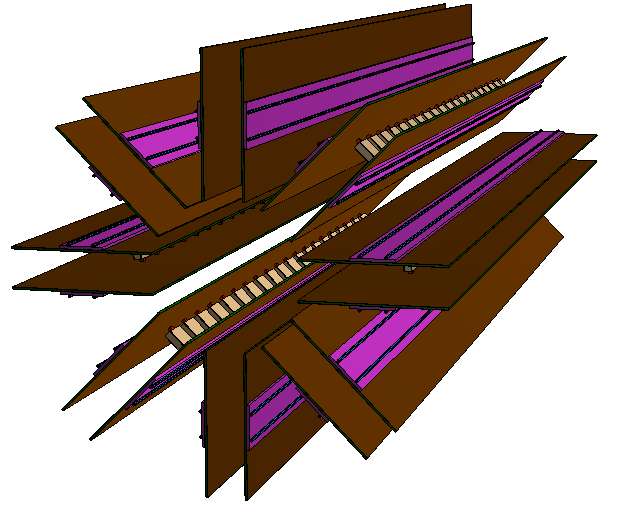The MPD experiment that is under construction in the NICA complex at JINR aimed to study the structure of matter under extreme conditions of density and temperature. MPD apparatus consists in several subdetectors (ITS, TPC, TOF FHCAl, ECal and FFD) that will be installed in two stages. However, are additional detectors that are under consideration, in particular the construction of the mini Beam Beam detector (miniBeBe) which its main objective is to be a level-0 trigger for TOF detector. To support the proposal of miniBeBe, detector performance should be studied. The main goal of this Interest project is to learn about the detector development, get multiplicity distributions and explore the feasibility of MiniBeBe to contribute to the determination of centrality of heavy ion collisions.
Tasks
Development of software to include MiniBeBe detector within MPDroot framework, measure multiplicity and estimates centrality of heavy ion collisions within MiniBeBe detector.
Preliminary schedule by topics/tasks
1st week – Introductory lectures about heavy-ion collisions, event generators, NICA complex, MPD experiment and MPDRoot Framework.
2nd – 3rd week – MPDRoot installation, analysis of detector class library and transport of particles within mpdroot framework.
4th – 6th week – Measurement of multiplicity distribution and centrality estimation.
7th week – Writing of final report and presentation of results.
Required skills
Obligatory: Knowledge of Linux, C++ and basic ROOT usage. Basic Knowledge of particle physics. Notebook or PC with Linux installed (Fedora or Ubuntu 22.04, 20.04 are preferable) + sufficient disk space for the MPDRoot installation and data.
Good Knowledge of English or Spanish (B2 or higher).
Desirable: Basic knowledge about heavy-ion collisions and detectors.
Acquired skills and experience
The student will acquire knowledge about the development of detectors for heavy ion collisions.
The student will learn about methods of detector simulation and data analysis, and acquire experience in C++ programming within the framework of High Energy experiments.
Recommended literature
1. Abgaryan, V. et al. ( MPD Collaboration) “Status and initial physics performance studies of the MPD experiment at NICA”, Eur. Phys. J. A (2022) 58, 140. https://link.springer.com/article/10.1140/epja/s10050-022-00750-6
2. R. Acevedo Kado et al. “The conceptual design of the miniBeBe detector proposed for NICA-MPD” JINST 16 (2021) 02, P02002
https://iopscience.iop.org/article/10.1088/1748-0221/16/02/P02002
3. Raghunath Sahoo. “Relativistic Kinematics”. E-print: 1604.02651 [nucl-ex] https://arxiv.org/pdf/1604.02651.pdf
4. http://mpd.jinr.ru
5. https://fairroot.gsi.de/index.html%3Fq=node%252F47.html






